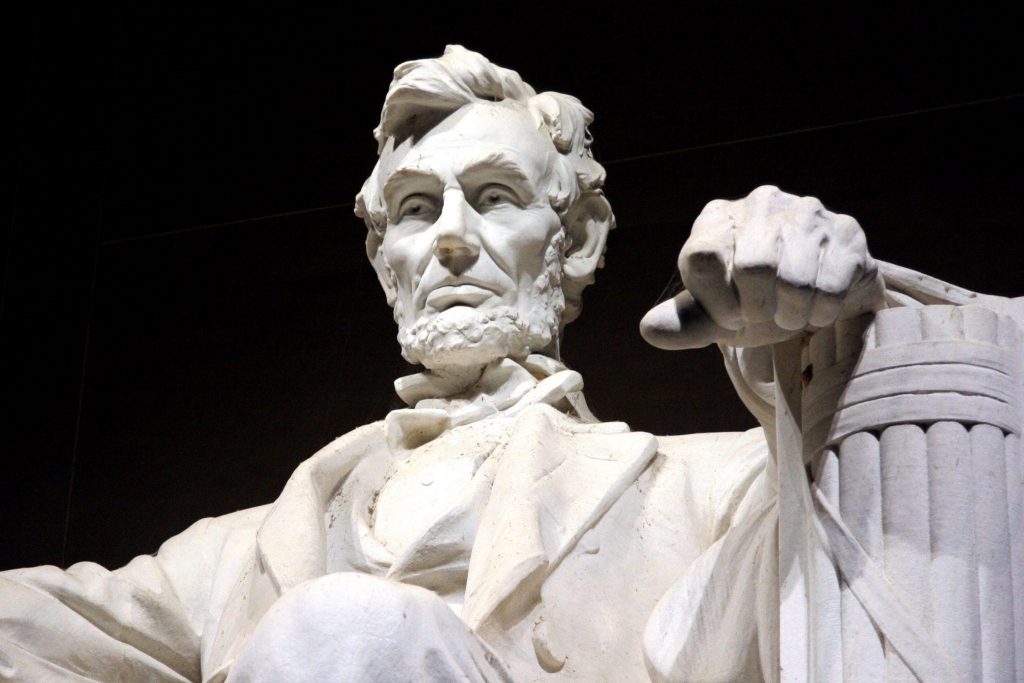THE WORLD’S #1 EXECUTIVE COACHING AND BUSINESS COACHING BLOG SINCE 2017.
Cultivating Patience: The Virtue of Patient Leadership in Fast-Paced Environments
Published On: April 29, 2024 | Last updated on: March 12, 2025 | Author: John Mattone | Category: Blog, Intelligent Leadership
: Patience is a true virtue in leadership. Patient leadership can boost employee morale, enhance communication, and increase efficiency while creating healthy organizational cultures focused on psychological safety and cooperation. Patient leadership requires active listening skills, high emotional intelligence, resilience, and leadership maturity. Leadership coaching can help you obtain these skills and develop the abilities you need to become a more patient and effective leader.
“To lose patience is to lose the battle.” – Mahatma Gandhi.
Patient leadership is one of the challenges of modern, intelligent leadership. We all imagine successful, inspirational leaders as people with brilliant minds who speak, empower, and lead by example. At the same time, however, unseen to the casual observer, such leaders have patient hearts that listen. They seek to actively involve everyone in decision-making, harnessing the power of alternative perspectives and facilitating active collaboration.

Patience is a leadership virtue indeed.
Patient leadership helps teams and organizations develop collaboration-focused cultures conducive to improved performance. It allows individuals to participate in decision-making and take ownership of their work. Some other benefits of patient leadership are:
- Better employee satisfaction. When people take psychological ownership of their work, have a real say in how they do it, and see that leadership values their contributions, they are much less likely to leave the organization.
- Enhanced communication. Leadership patience translates to better, more effective communication as leaders look to understand their employees’ perspectives and involve them in decision-making.
- Employee empowerment. Leaders who listen to their employees’ perspectives and consider their input automatically empower those who work for them.
- Increased efficiency. Multiple perspectives carry many potential solutions to problems. Leaders who consider alternative perspectives make better decisions and solve problems more effectively with engaged and motivated employees.
- Healthy organizational cultures. Collaboration-focused organizational cultures empower, encourage, and motivate employees and leaders alike.
Patience in leadership is a virtue conducive to effective leadership and better team engagement. A leader’s role is not to command but to inspire. And leadership patience is a superb tool to that end.
Understanding Patient Leadership
At a glance, one would be tempted to define patient leadership as a concept that transcends the traditional notions of leadership. As a leadership coaching expert, however, I can’t agree with that definition. I think patient leadership is an integral part of healthy leadership in the traditional and modern sense.
Patient leadership is about collaboration, inclusivity, empowerment, advocacy, and outstanding communication. Its principles cover:
- Collaborative decision-making. Leaders listen to feedback and alternative perspectives, allowing others to participate in decision-making.
- Patient leaders delegate decision-making while providing employees with the skills and knowledge they need to make well-aligned decisions.
- Emotional regulation. Leadership patience requires the ability to keep emotions in check even in fast-paced, challenging environments.
- Active listening. Cooperative decision-making and effective back-and-forth feedback require outstanding communication abilities, including active listening.
- Persistence and resilience. Patience is the ability to remain steadfast in the face of challenges, shrugging off setbacks as inevitable companions of progress and success.
- Self-reflection. Leadership patience also translates to taking time to assess one’s leadership traits, abilities, and inclinations.
- Long-term thinking. Patient leaders have low time preferences. They understand that meaningful progress takes time. They know that tiny changes often compound into spectacular results over time.
In fast-paced environments, patience allows leaders to maintain their composure and make well-thought-out, strategic decisions. Patient leaders find it easier to build meaningful relationships and adapt to change. Using the resilience patience lends them, leaders manage change better. They adopt a low-time-preference attitude about developing in-house talent. And they pace themselves better amid the rush, avoiding burnout.
Patient leaders tend to have more mature attitudes toward challenges. Knowing that successful leadership is a marathon rather than a sprint, they make long-term plans and decisions, managing their teams accordingly.
The Benefits of Patient Leadership
“One minute of patience, ten years of peace.”- Greek proverb.
We consider patience to be a virtue for a reason. It provides us with many benefits in our day-to-day personal lives, as well as in leadership. Patient people have a low time preference and focus on longer-term goals. As a result, they make better decisions than their high-time-preference peers and can achieve much more in life.
Rational choices align well with perseverance and resilience. Patience helps us build better mental health, turning us into islands of stability amid the helter-skelter that defines many people’s lives.
Leadership composure can be incredibly inspirational.
Patience allows us to build skills and relationships and enjoy better physical health. It lets us practice faith and kindness, gifting us peace in return.
As an executive coaching expert, I define the benefits of patience in leadership as follows:
- Improved decision-making. Longer time horizons, more deliberation, and the willingness to listen to alternative perspectives combine to create better leadership decisions and more satisfactory outcomes. Patient leaders understand the weight of their decisions and their long-term consequences. Patience saves such leaders from the pressures and pitfalls of rushed decisions.
- Better team dynamics. Patience gives people more freedom to be creative and solve problems. Beyond the psychological safety they exude, patient leaders empower their teams by listening actively, communicating openly, expressing their appreciation, resolving conflicts, making collaborative decisions, and embracing change.
- Enhanced resilience. Leaders’ calmness and composure rub off on their teams. When faced with challenges and setbacks, composed employees adopt problem-solving attitudes instead of panicking. Leadership patience builds team resilience, trust, cohesion, and adaptability. By keeping long-term goals in focus, patient leaders convey a low-time-preference approach to life and work performance, treating setbacks as learning opportunities and natural landmarks of the journey to success.
Cultivating Patience as a Leader
How to be patient? How to be a better, more effective, and mature leader in the middle of a fast-paced and seemingly unforgiving work environment?
As a leadership coach, I understand the value of leadership maturity and know how to steer my clients toward a more patient and mature leadership.
- Develop emotional intelligence. Emotional intelligence is the ability to understand your emotions and the emotions of others. EQ is also about knowing how your emotions and reactions shape the emotions of others. I see emotional intelligence as a cornerstone of intelligent leadership. Self-awareness forms the basis of EQ. As such, it allows leaders to rein in their emotions and instill patience in themselves by overruling their tendencies to panic, overreact, or misjudge.
- Practice mindfulness. Mindfulness allows you to step back and pause the flow of your emotional reactions. By giving you a bird’s eye view of the situation, mindfulness can help you slow down and pay attention to the details that may hide the best solution for your problem. To practice mindfulness, find a quiet space, engage your senses, and focus on your breath while observing your reactions.
- Set realistic expectations. You can be a more patient leader by avoiding frustration triggers under your control. By setting realistic expectations, you free yourself and your team of unnecessary pressure that may result in frustration.
- Delegate tasks effectively. Delegation is an essential leadership skill that can help you lighten your workload and avoid frustrating situations that test your patience. By delegating tasks effectively, you also empower your employees, improving their engagement and motivation.
Case Studies of Patient Leadership
Many of history’s exemplary leaders demonstrated outstanding patience, maintaining their composure during fast-paced and extraordinary events. People who remain steadfast as the environment around them races ahead can be incredibly inspirational. Nelson Mandela and Angela Merkel are two examples of leaders whose rock-steady composure helped cement their legacies.
Abraham Lincoln’s patient and humble attitude during the Civil War united the country and held up the flag of righteousness during the direst of times.
Lincoln was the embodiment of humble, patient leadership.
Lincoln’s patience gave him an undeniable edge in strategic decision-making, emotional resilience, and resolve. Even amid the turmoil of the Civil War, Lincoln sought opportunities for reconciliation and healing. After the end of the war, he remained focused on patience and compassion, seeking to involve his former adversaries in the reconstruction efforts.
Conclusion
Leadership patience acts as a starting point and cornerstone for many other leadership virtues like emotional intelligence, the capacity for self-reflection, the willingness to listen to others, and the ability to remain unfazed by fast-paced environments. Patient leaders can be highly inspirational.
Are you patient enough as a leader? Do you take the time to practice mindfulness and listen to others’ ideas? Leadership coaching can help you identify gaps in your leadership abilities and devise ways to eliminate your patience-wise weaknesses.



